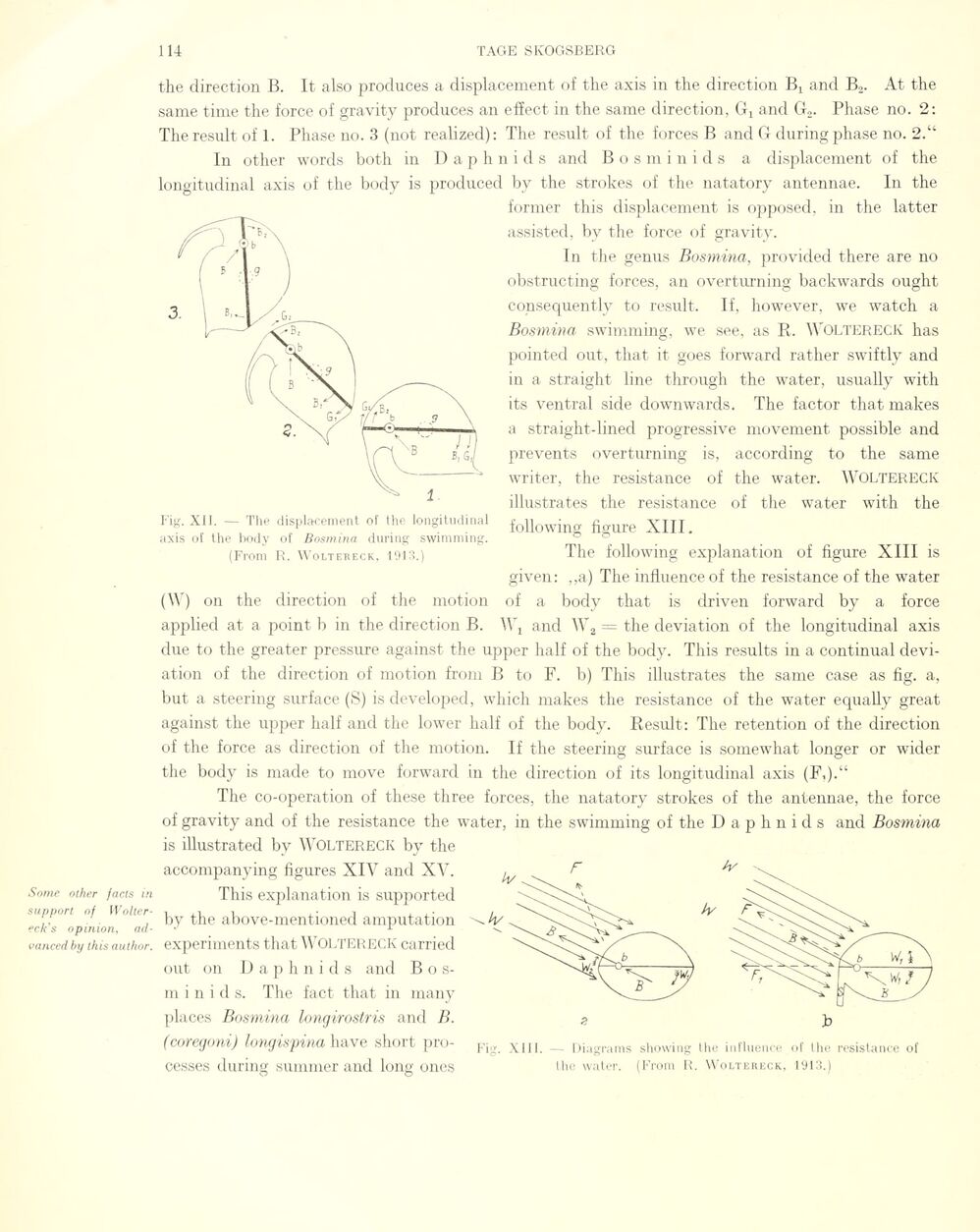
Full resolution (JPEG) - On this page / på denna sida - Sidor ...

<< prev. page << föreg. sida << >> nästa sida >> next page >>
Below is the raw OCR text
from the above scanned image.
Do you see an error? Proofread the page now!
Här nedan syns maskintolkade texten från faksimilbilden ovan.
Ser du något fel? Korrekturläs sidan nu!
This page has never been proofread. / Denna sida har aldrig korrekturlästs.
Sortie oiher facis in
support of
Wolter-eck’s opinion,
ad-vanced bxj this author.
Fig. XII. — The displacement of the longitudinal
axis of the hody of Bosmina during swimming.
(From R. Woltereck, 1913.)
the direction B. It also produces a displacement of the axis in the direction Bx and B2. At the
same time the force of gravity produces an effect in the same direction, Gx and G2. Phase no. 2:
The result of 1. Phase no. 3 (not realized): The resuit of the forces B and G during phase no. 2.“
In other words both in D a p h n i d s and Bosminids a displacement of the
longitudinal axis of the body is produced by the strokes of the natatory antennae. In the
former this displacement is opposed, in the latter
assisted, by the force of gravity.
In the genus Bosmina, provided there are no
obstructing forces, an overturning backwards ought
consequently to resuit. If, however, we watch a
Bosmina swimming, we see, as R. WOLTERECK bas
pointed out, that it goes forward rather swiftly and
in a straight line through the water, usually with
its ventral side downwards. The factor that makes
a straight-lined progressive movement possible and
prevents overturning is, according to the same
writer, the résistance of the water. WOLTERECK
illustrâtes the résistance of the water with the
following figure XIII.
The following explanation of figure XIII is
given: ,,a) The influence of the résistance of the water
(W) on the direction of the motion of a body that is driven forward by a force
applied at a point b in the direction B. Wx and Wa — the déviation of the longitudinal axis
due to the greater pressure against the upper half of the body. This results in a continuai
deviation of the direction of motion from B to F. b) This illustrâtes the same case as fig. a,
but a steering surface (S) is developed, which makes the résistance of the water equally great
against the upper half and the lower half of the body. Result: The retention of the direction
of the force as direction of the motion. If the steering surface is somewhat longer or wider
the body is made to move forward in the direction of its longitudinal axis (F,).“
The co-operation of these three forces, the natatory strokes of the antennae, the force
of gravity and of the résistance the water, in the swimming of the Daphnids and Bosmina
is illustrated bv WOLTERECK by the
accompanying figures XIV and XV.
This explanation is supported
by the above-mentioned amputation
experiments that Woltereck carried
out on Daphnids and
Bosminids. The fact that in many
places Bosmina longirostris and B.
(coregoni) longispina have short pro- pXg# XIII. — Diagrams showing the influence of the résistance of
cesses during summer and long ones the water. (From R. Woltereck, 1913.1
O O
<< prev. page << föreg. sida << >> nästa sida >> next page >>